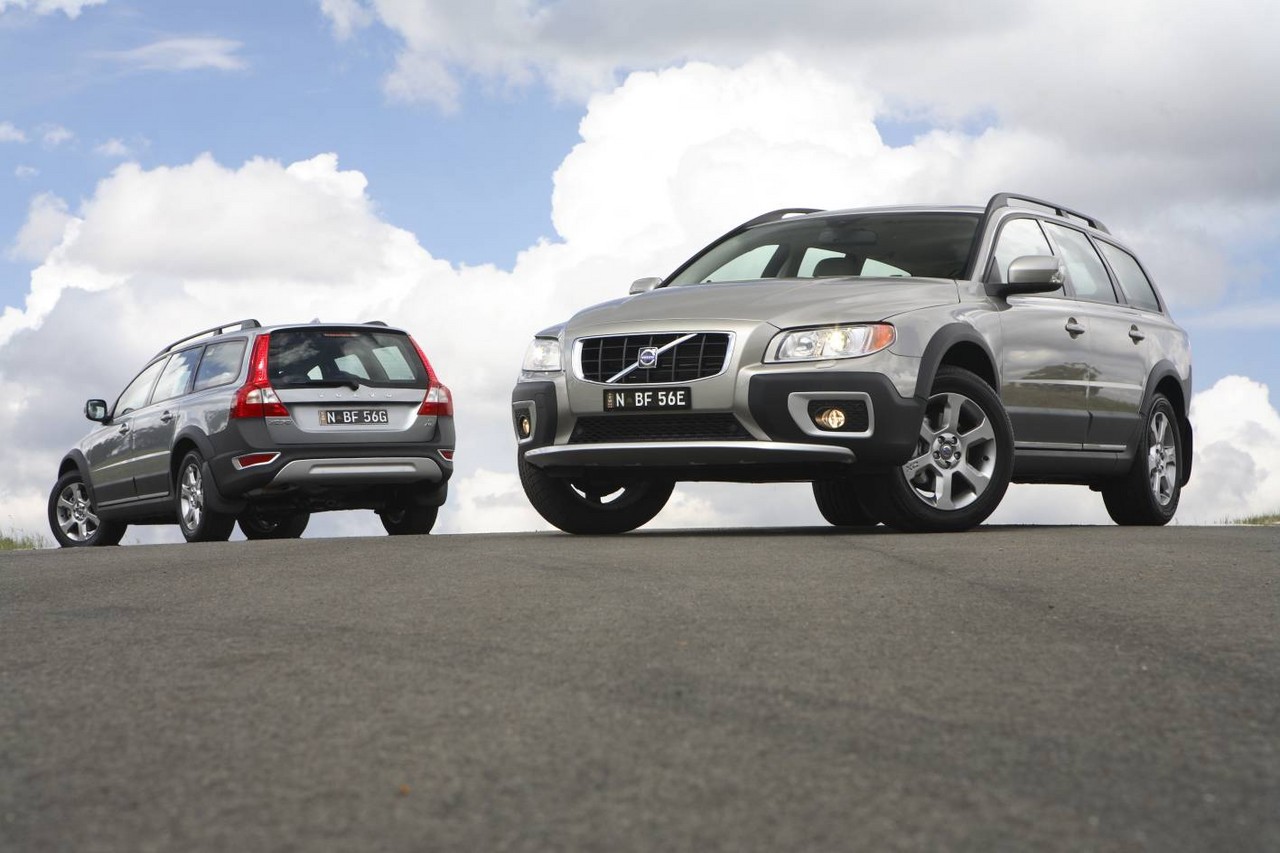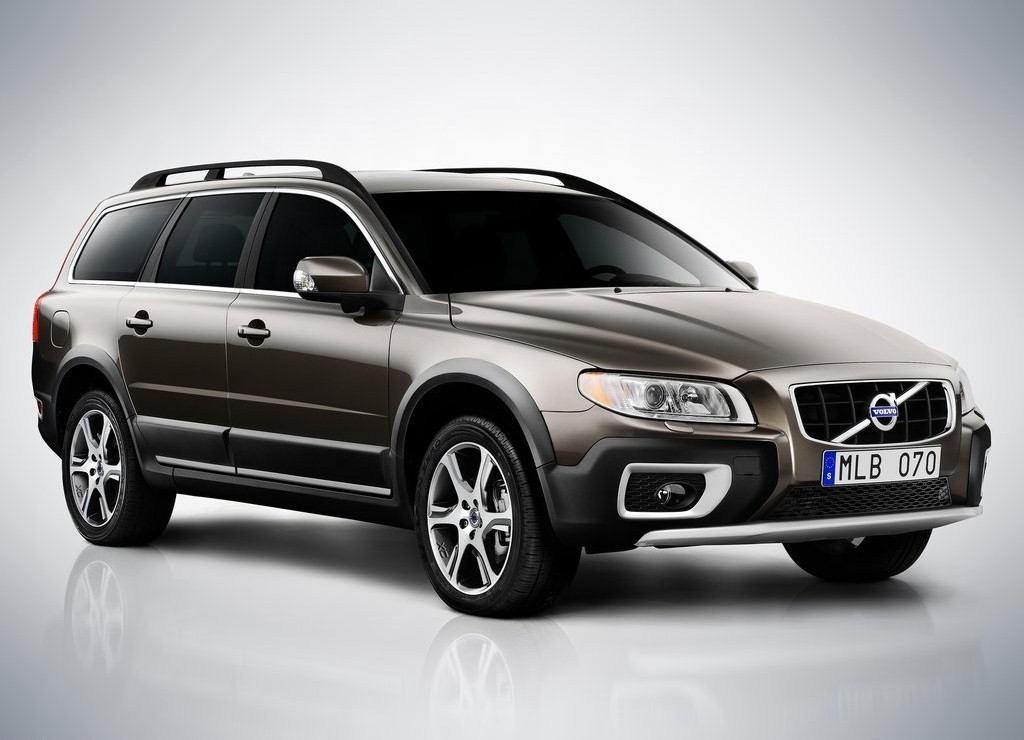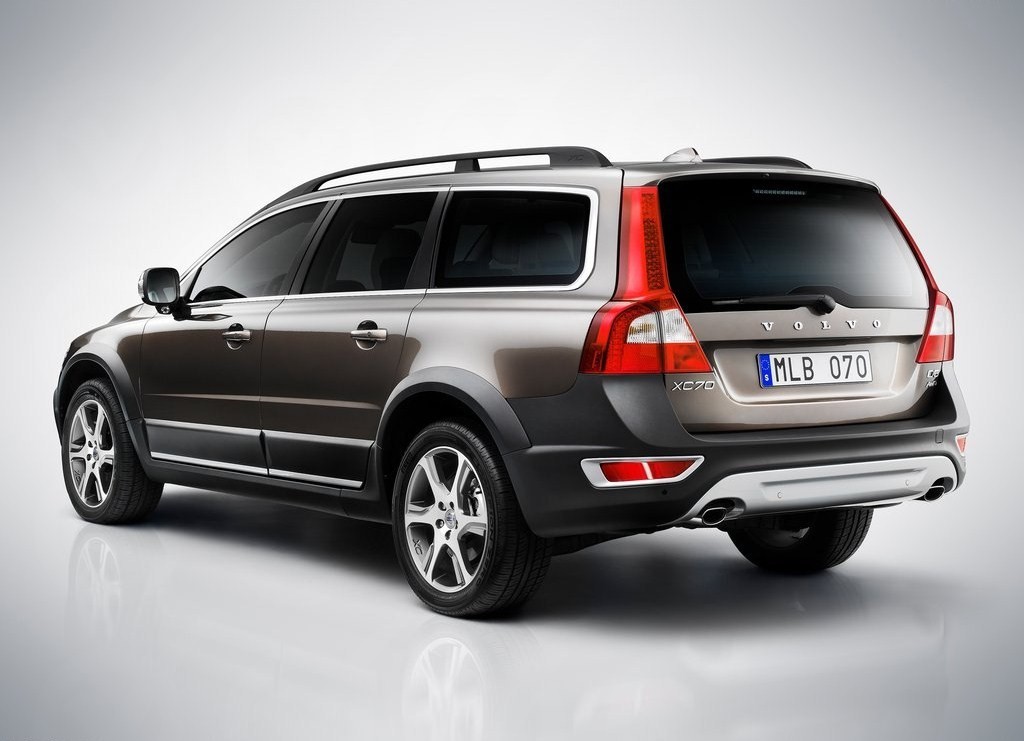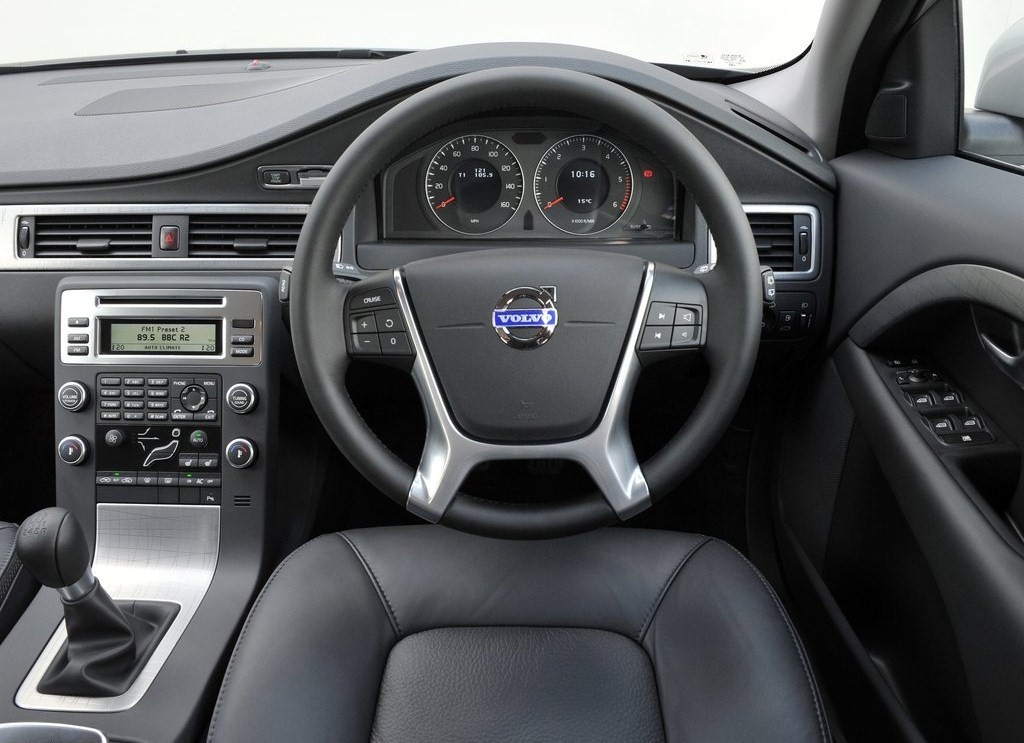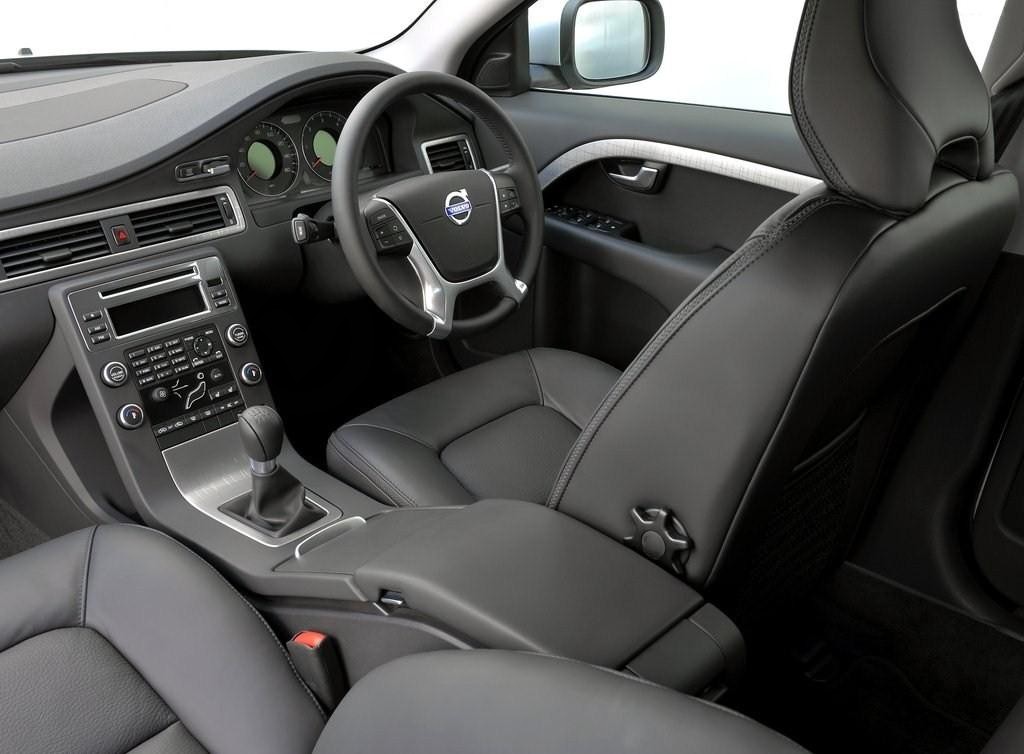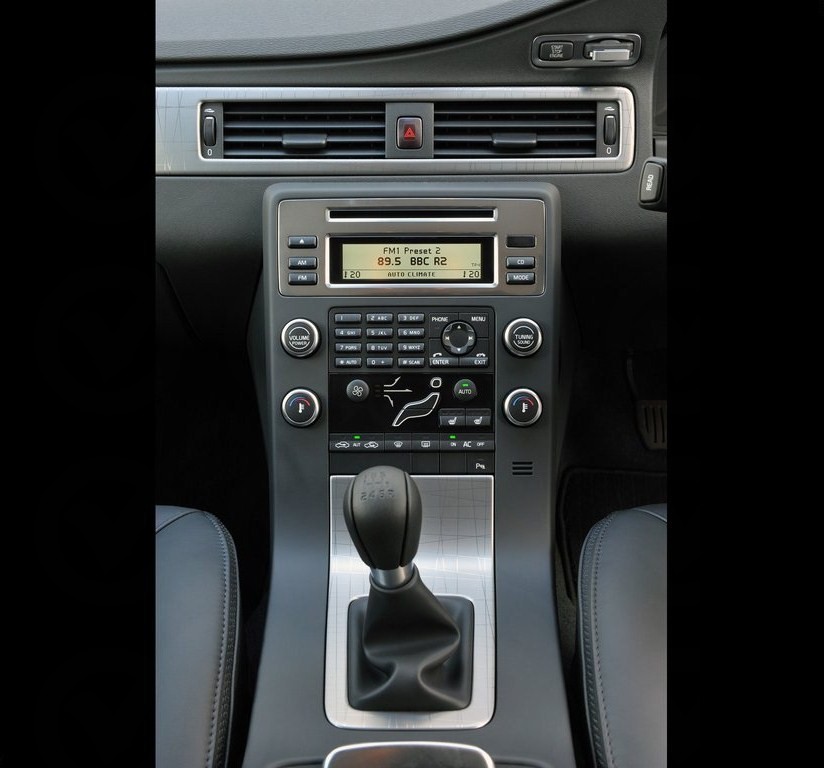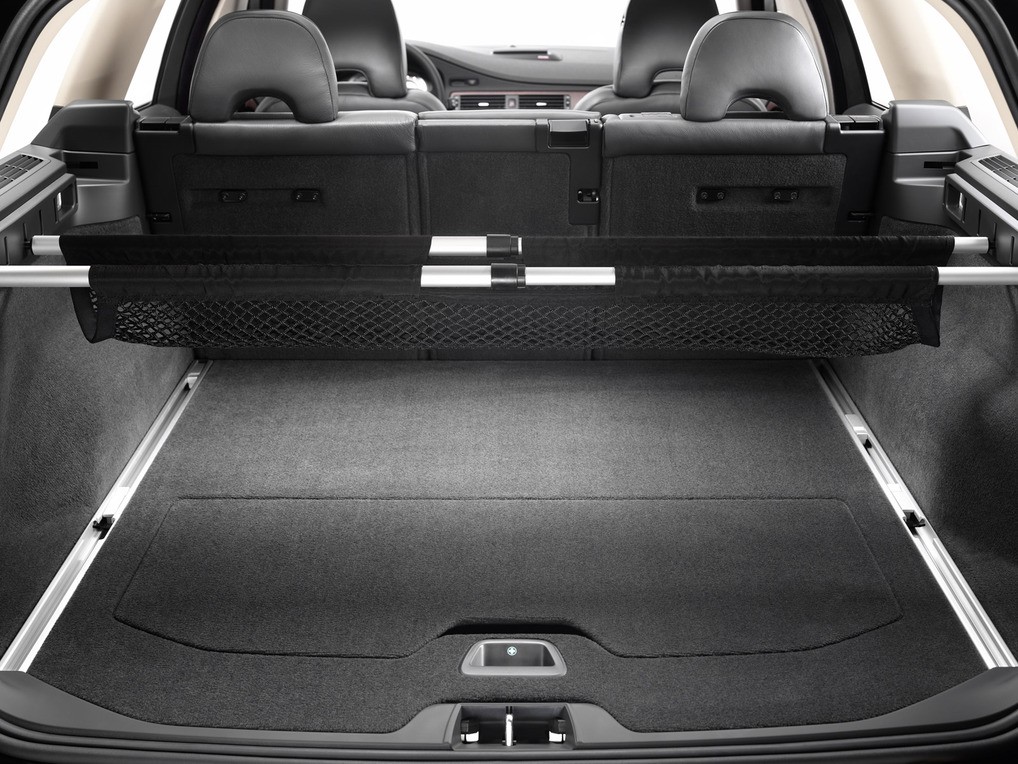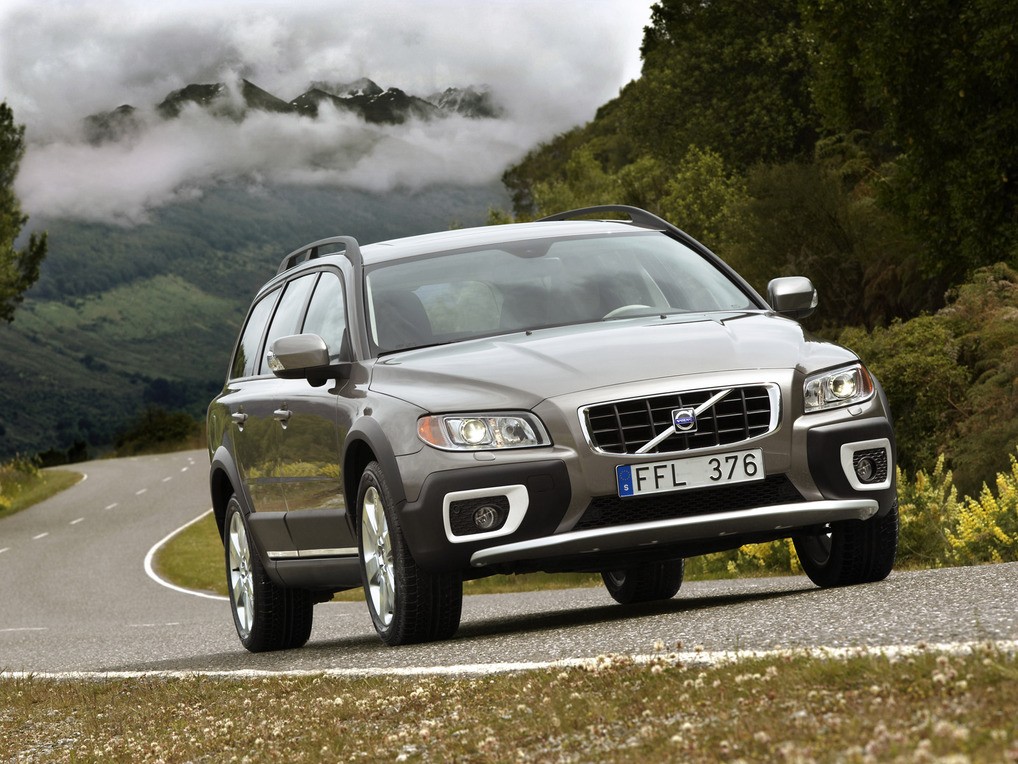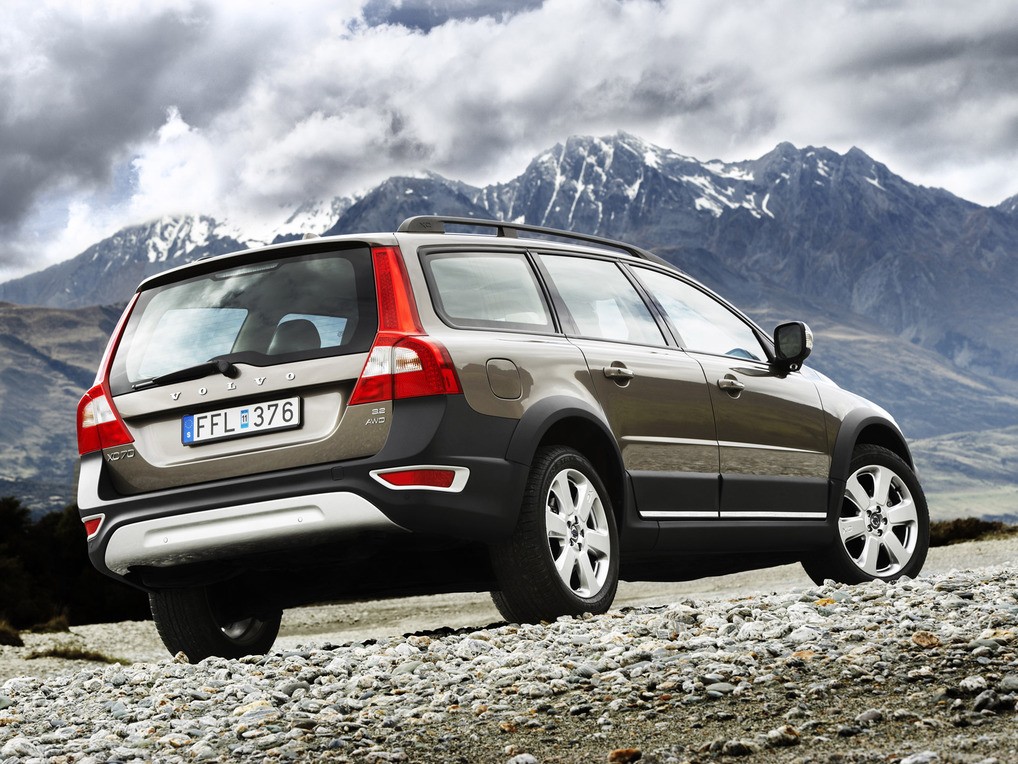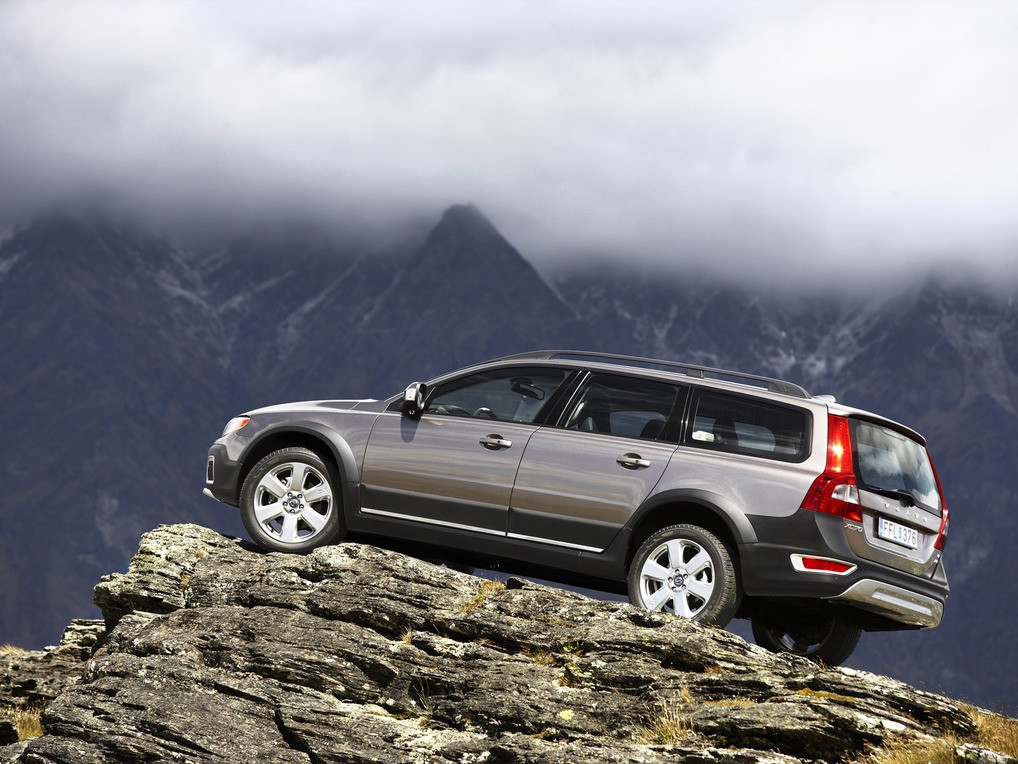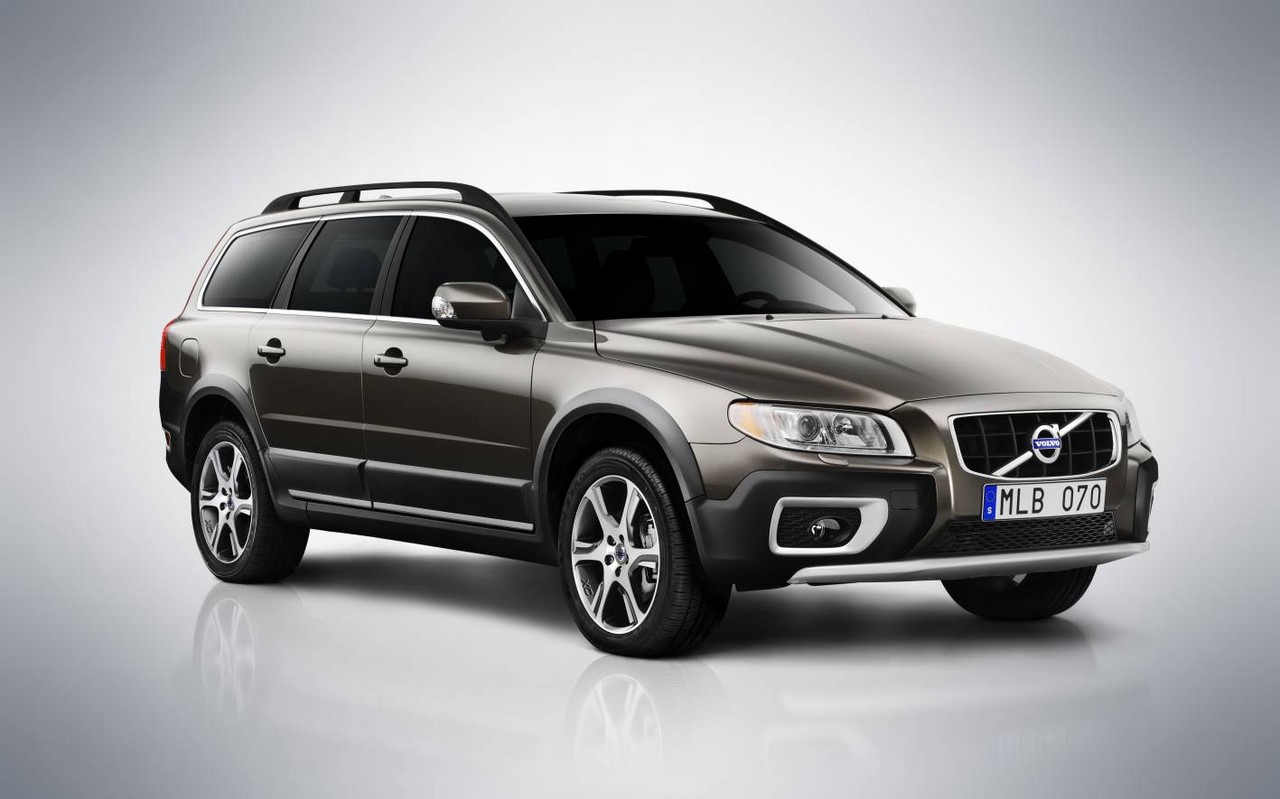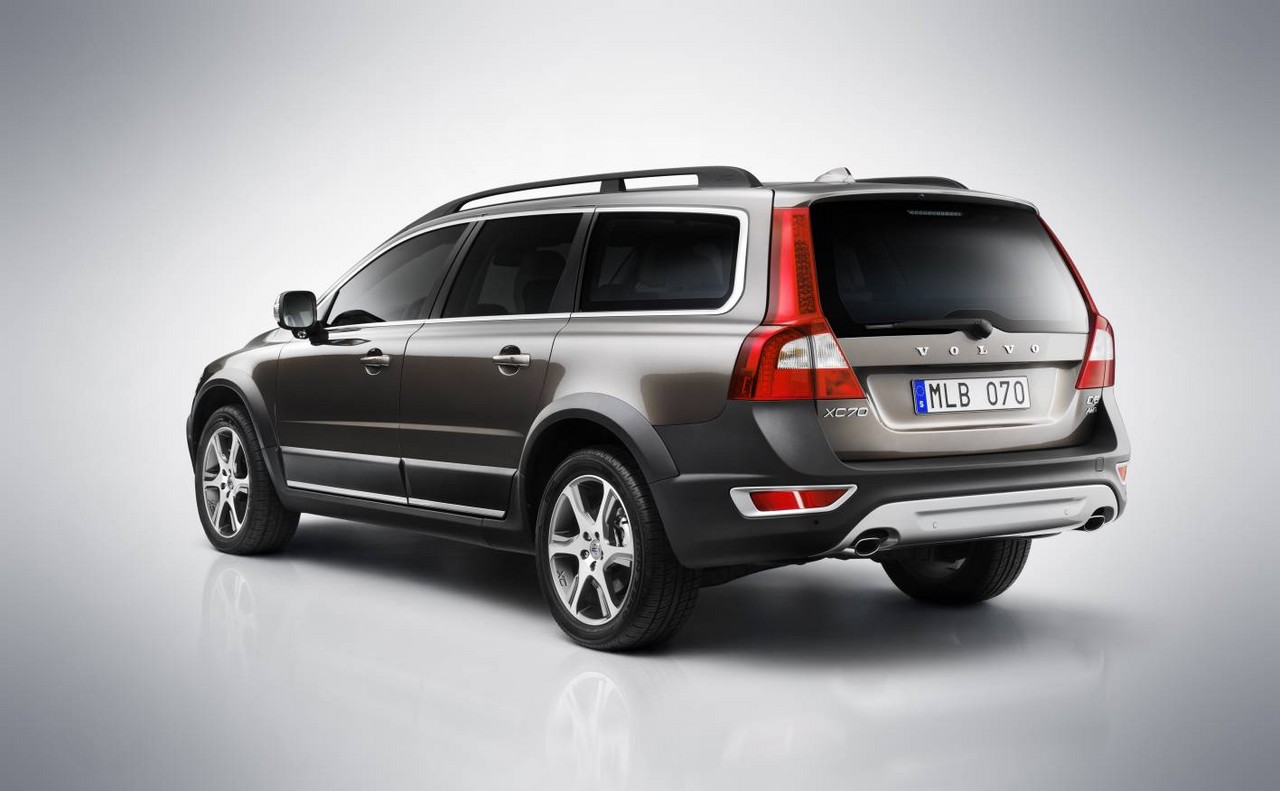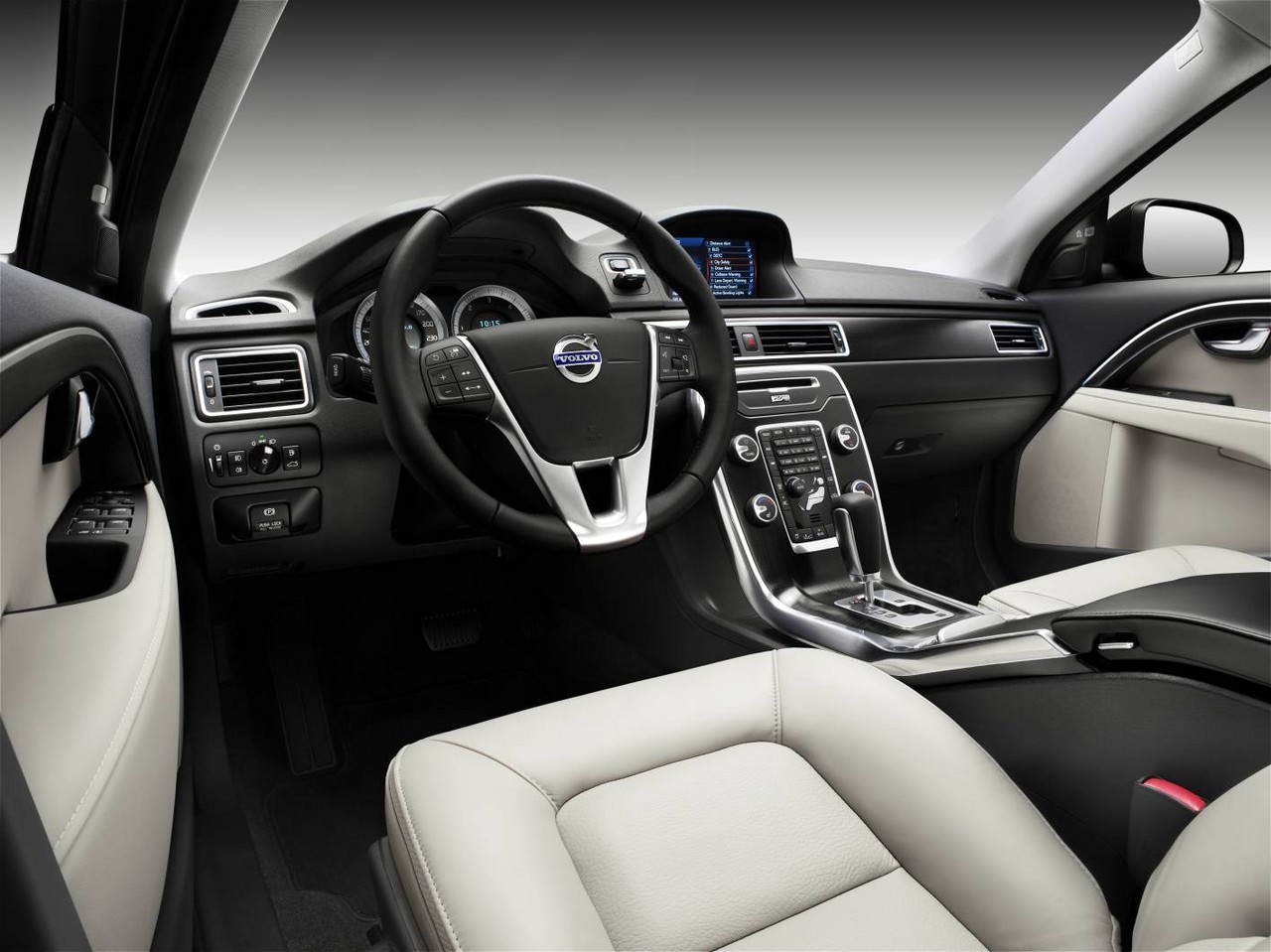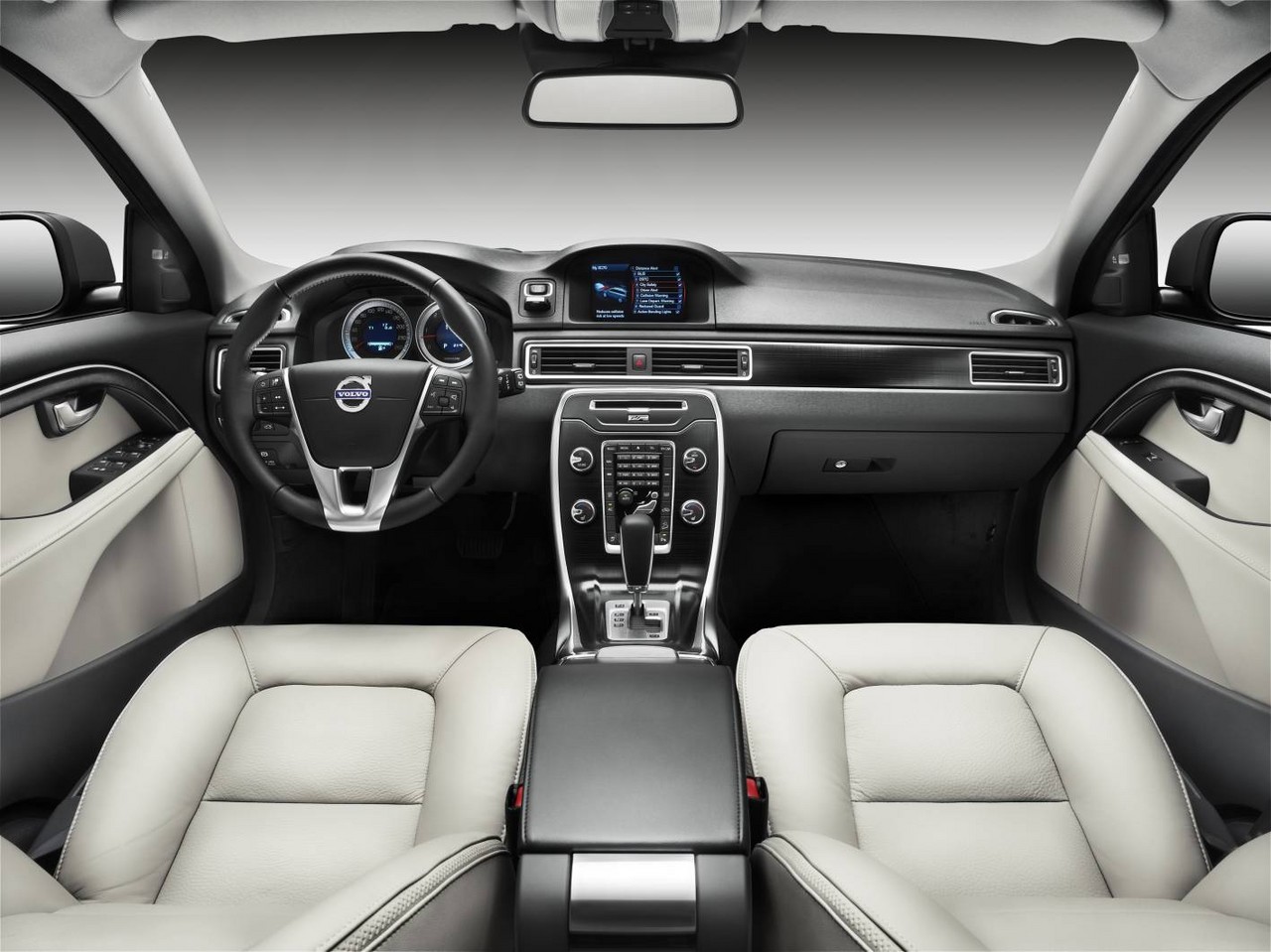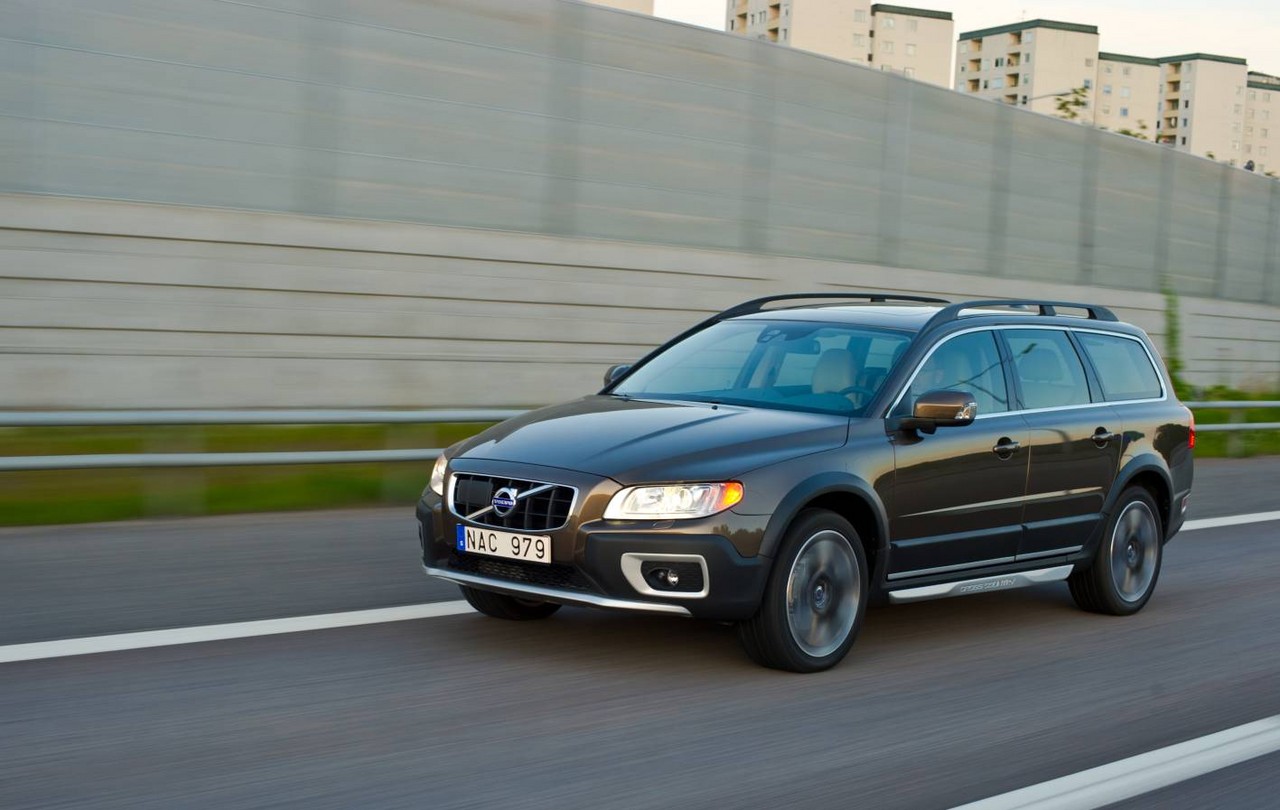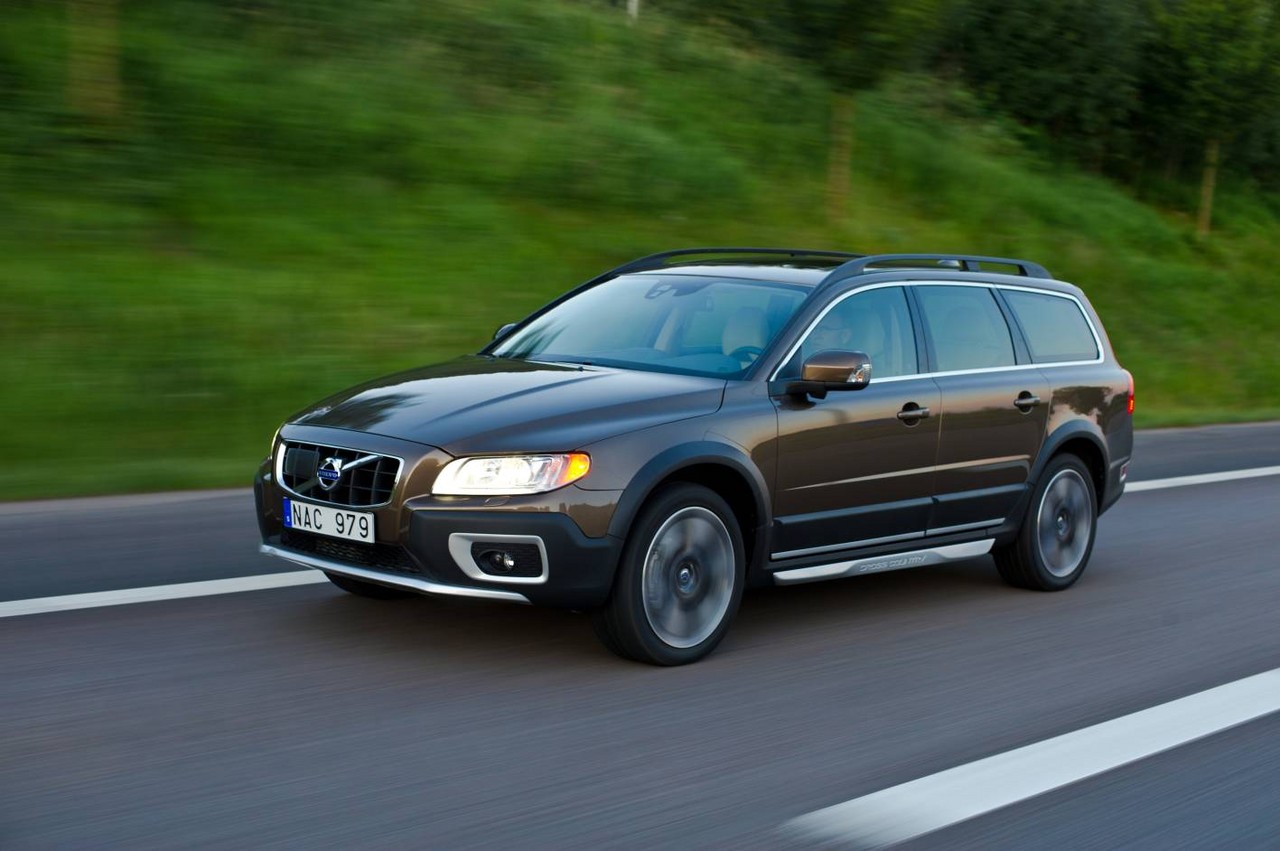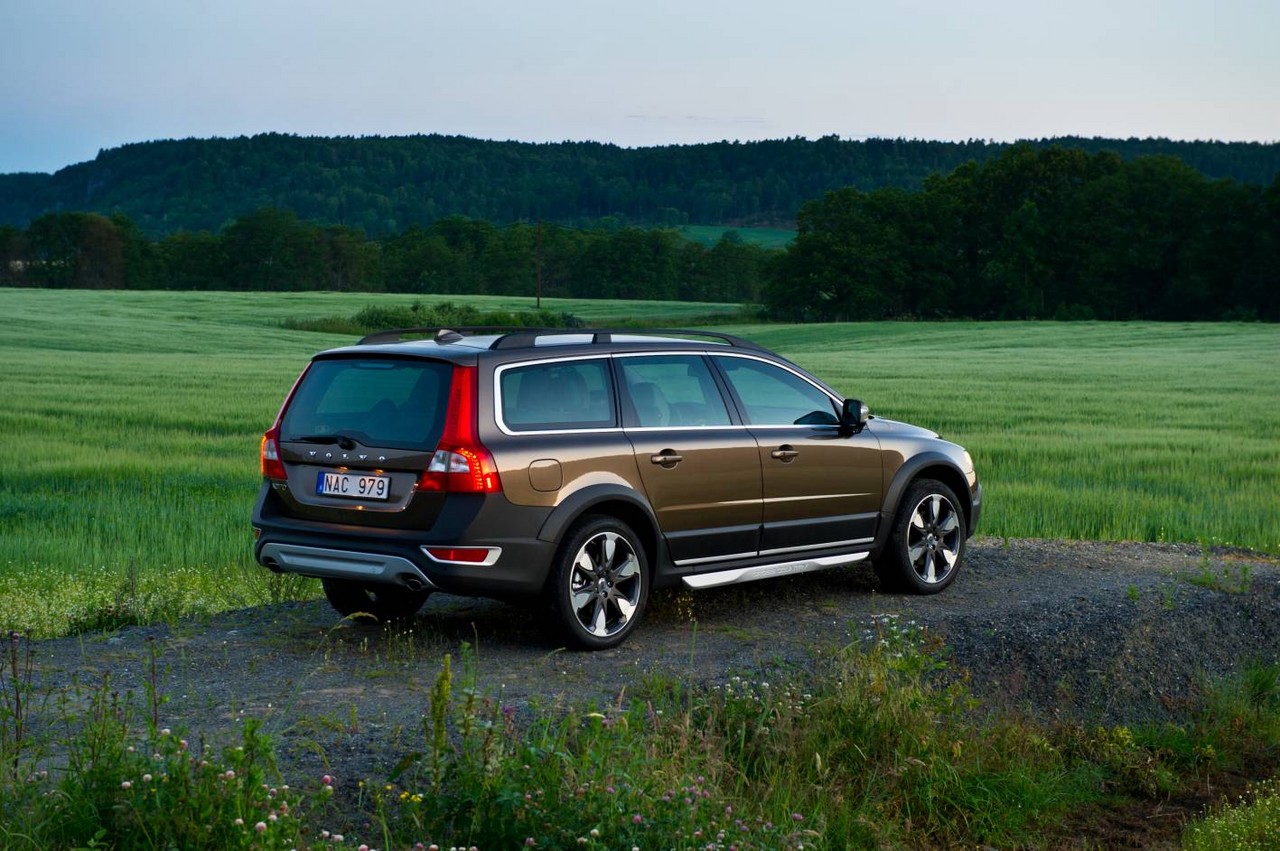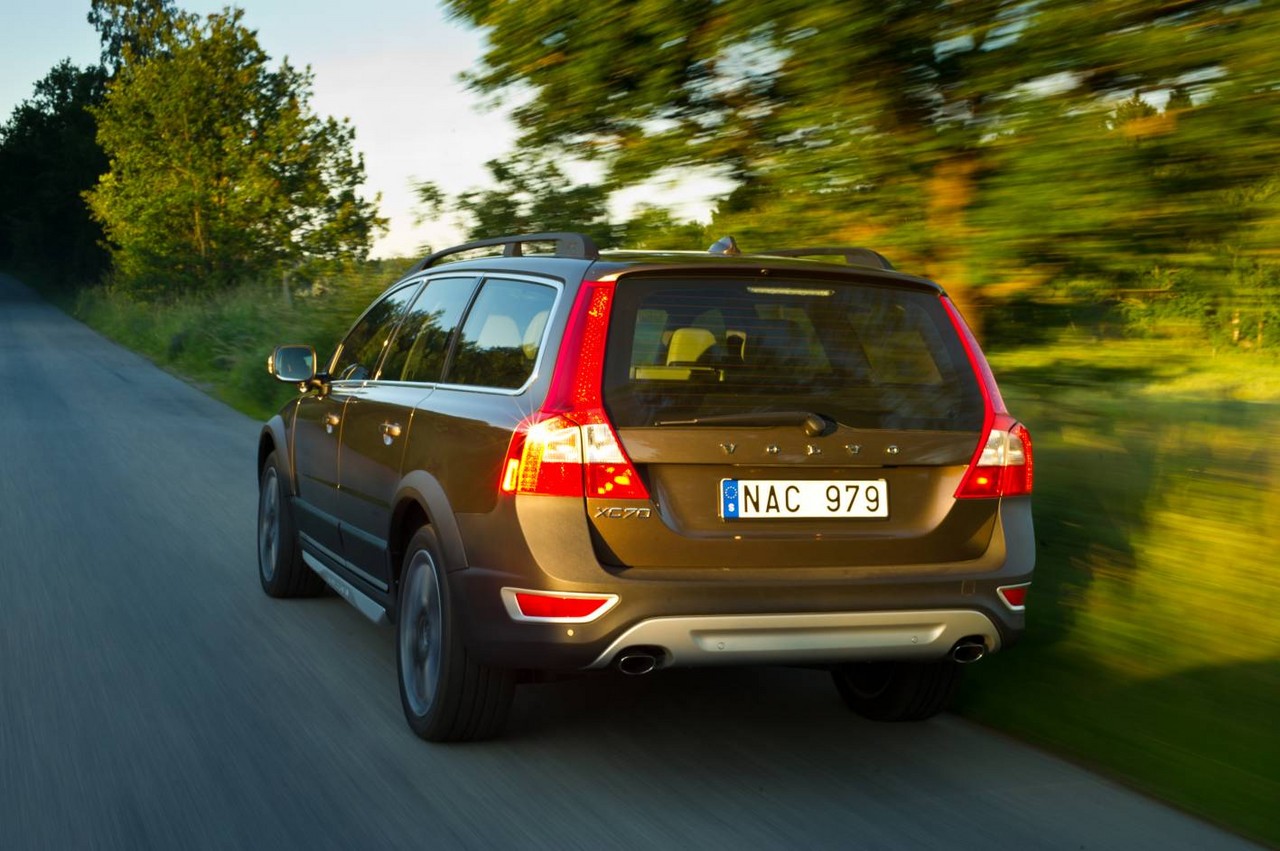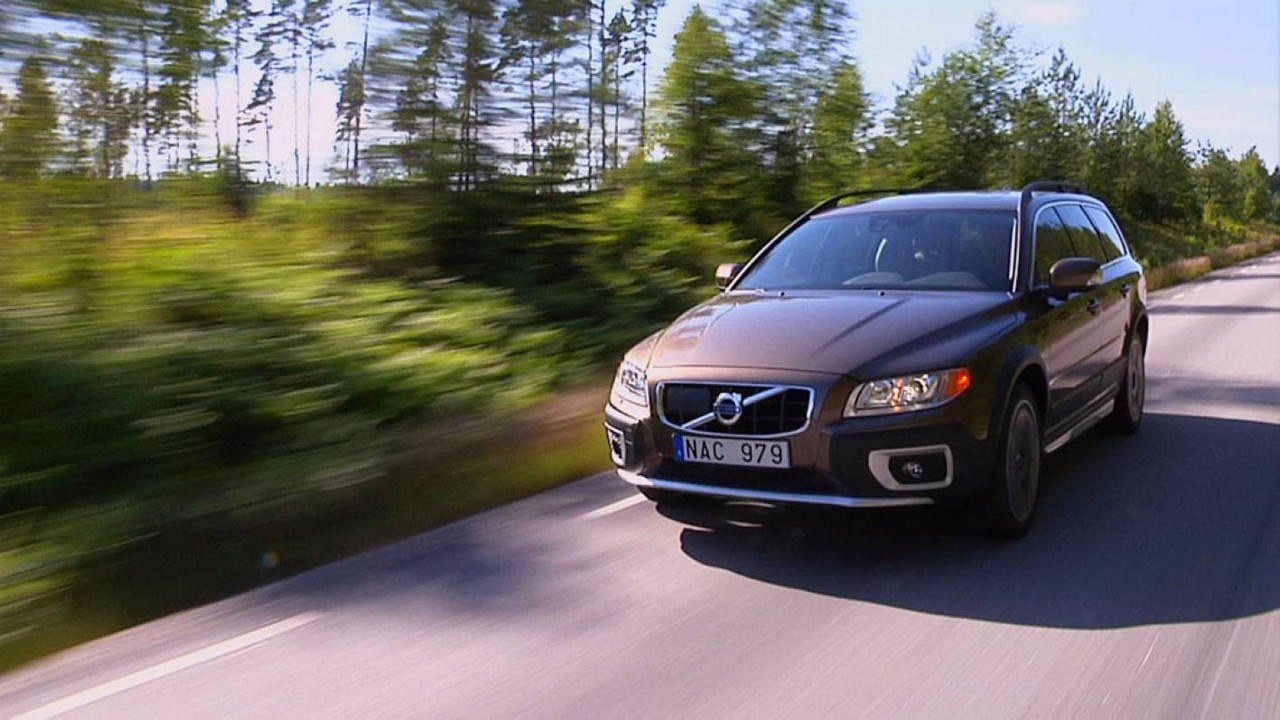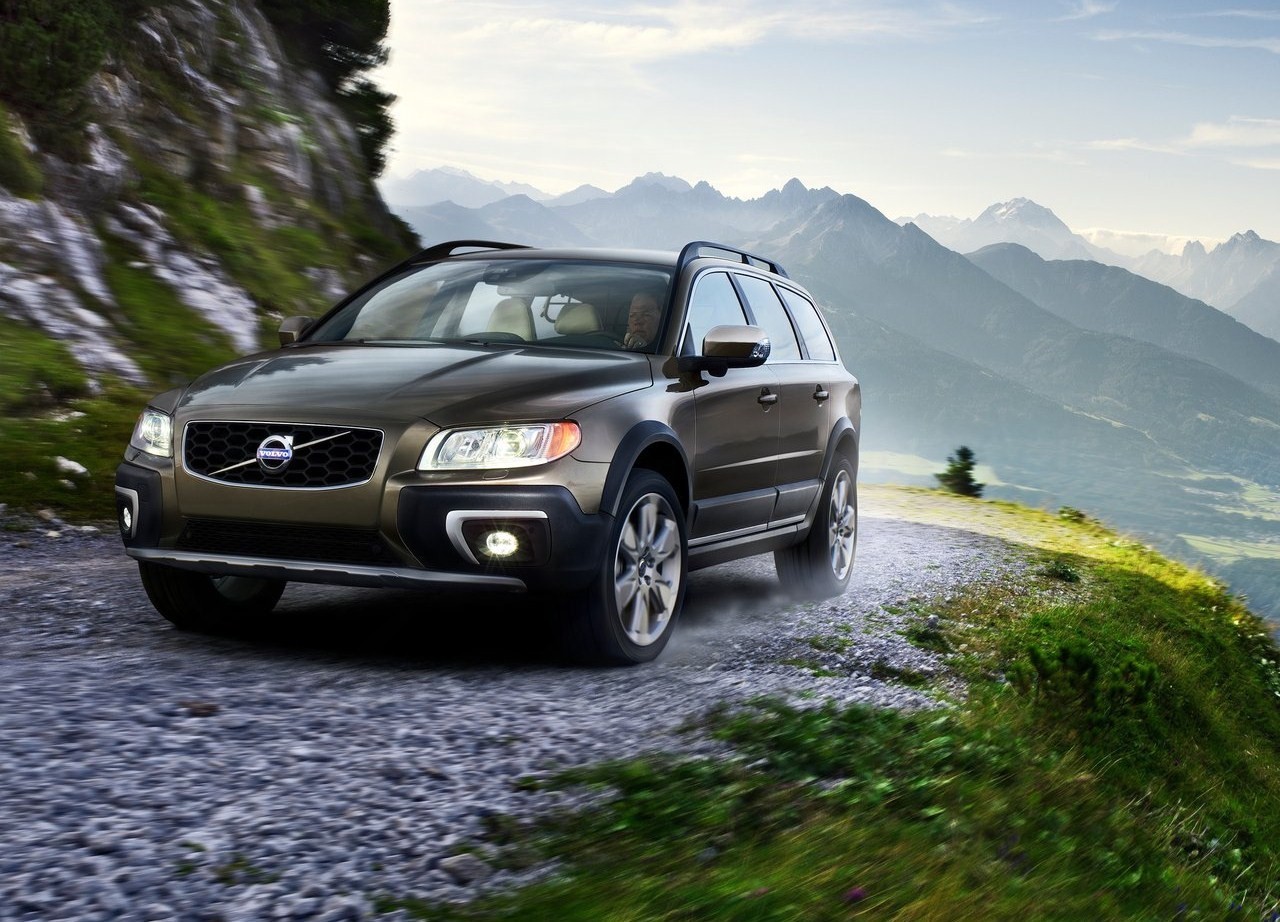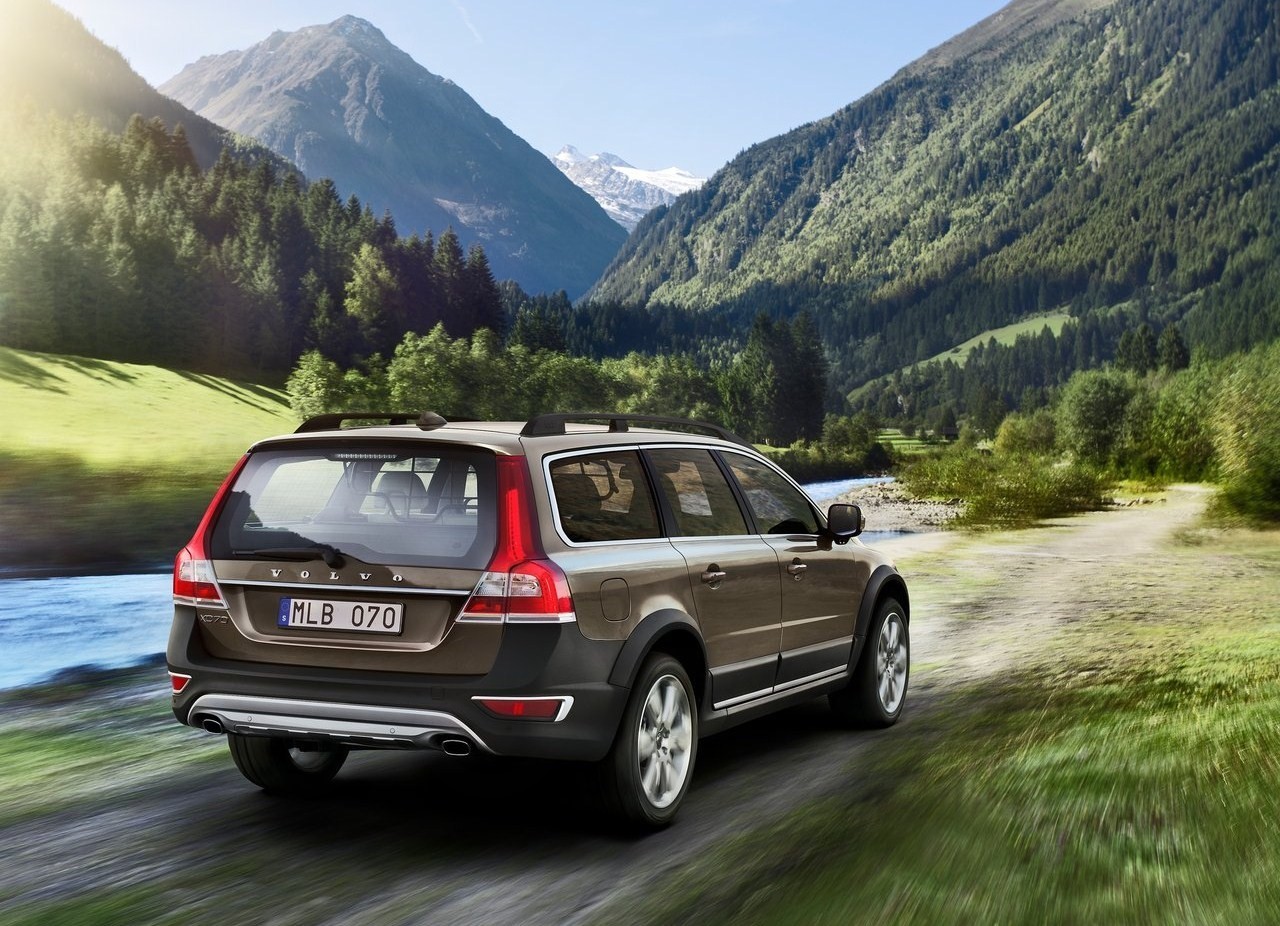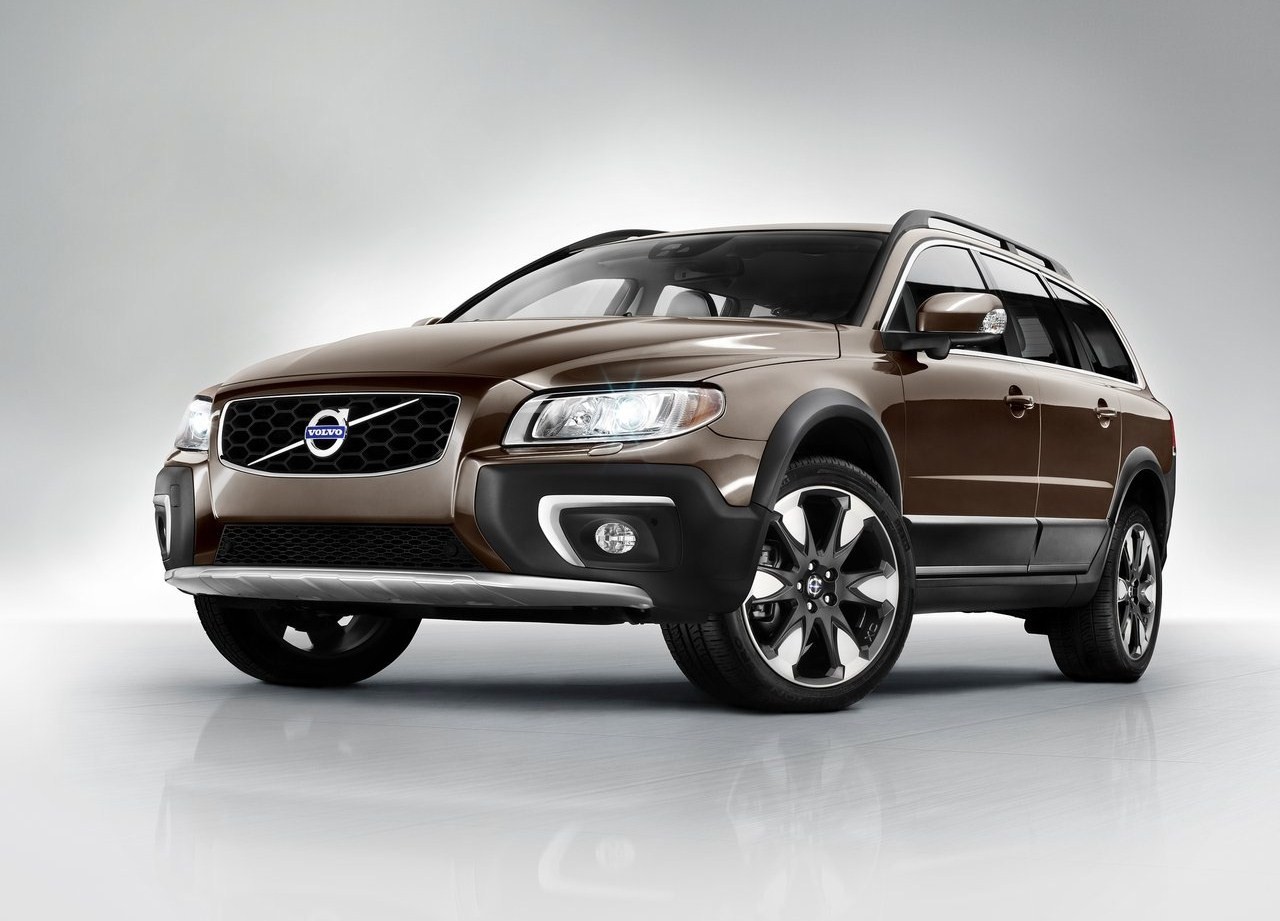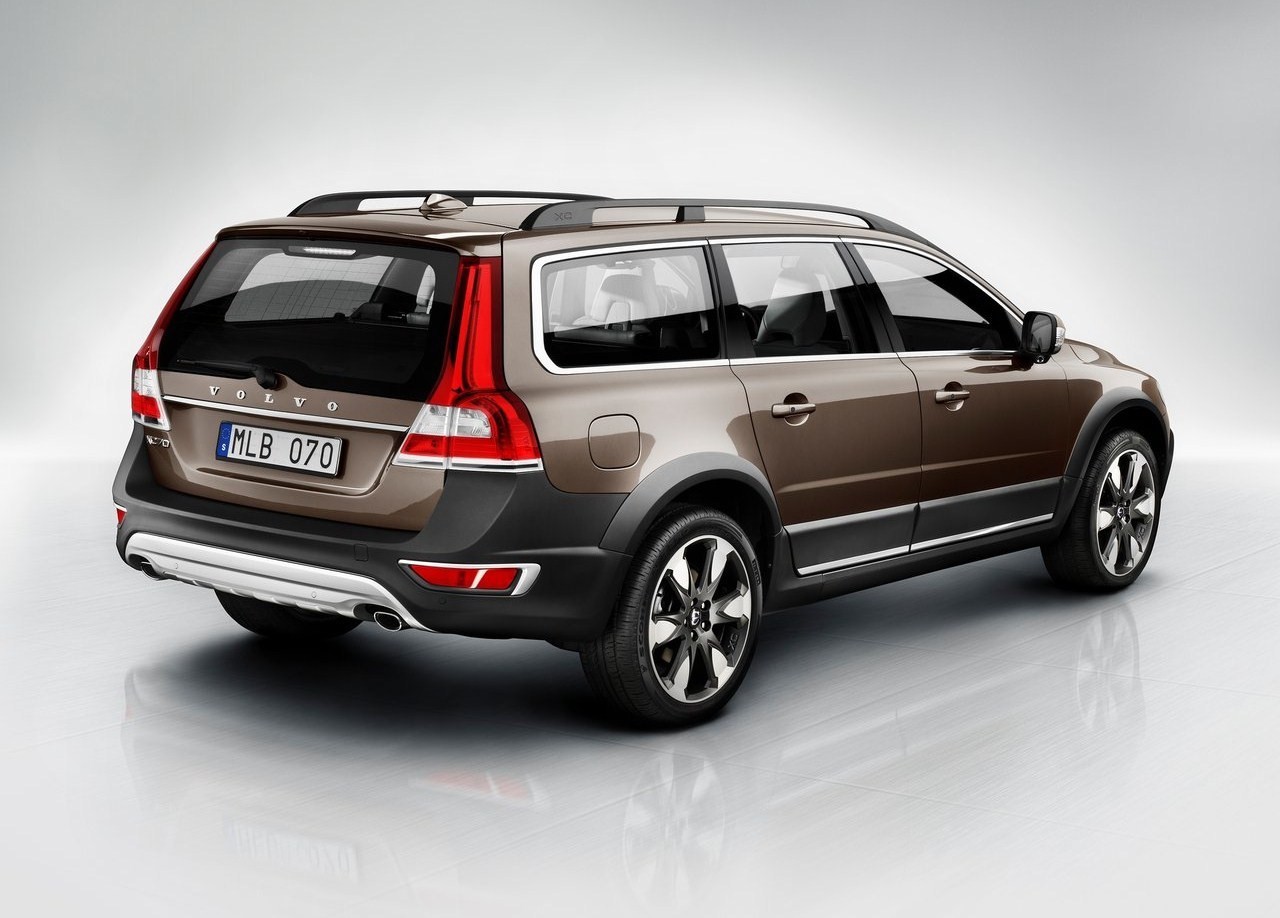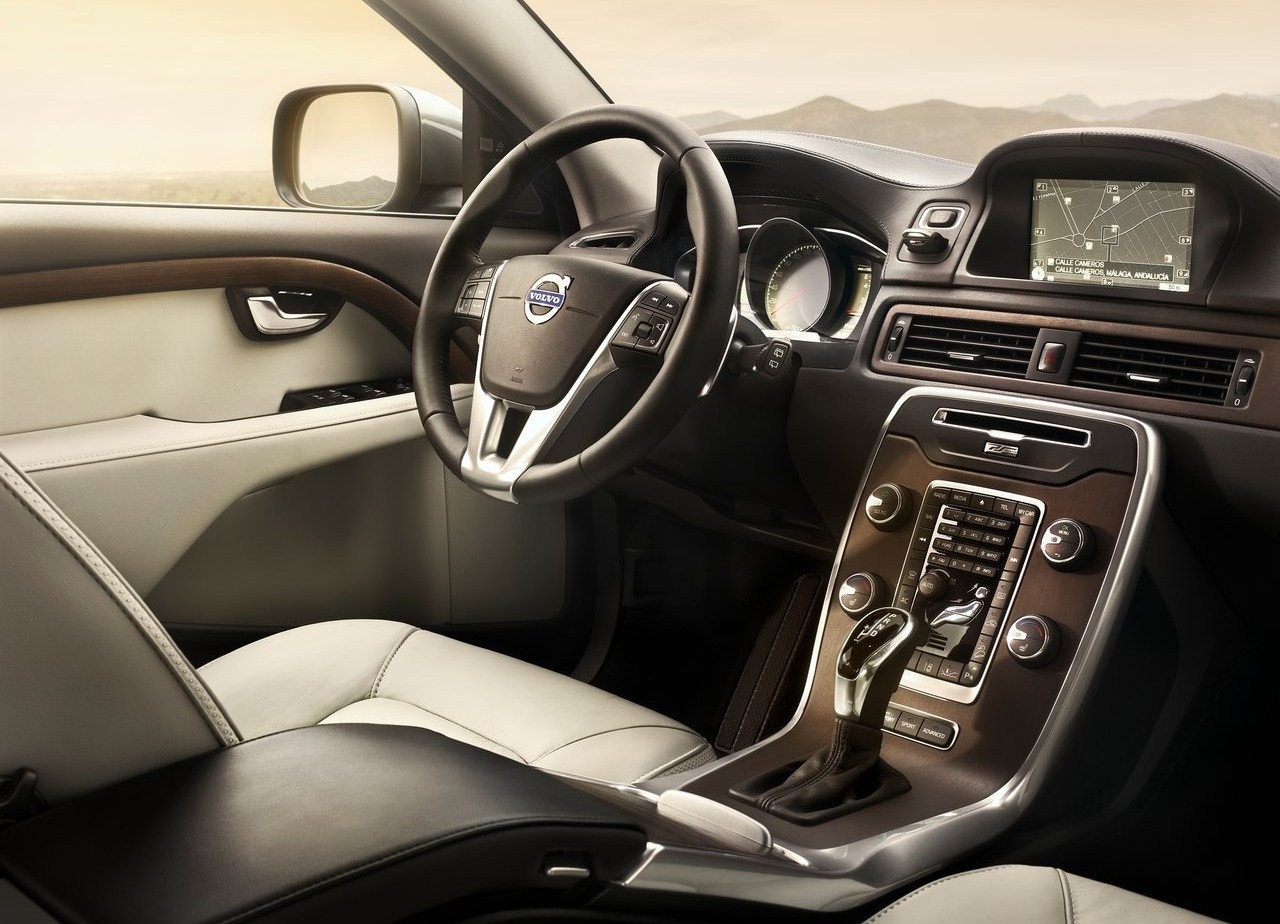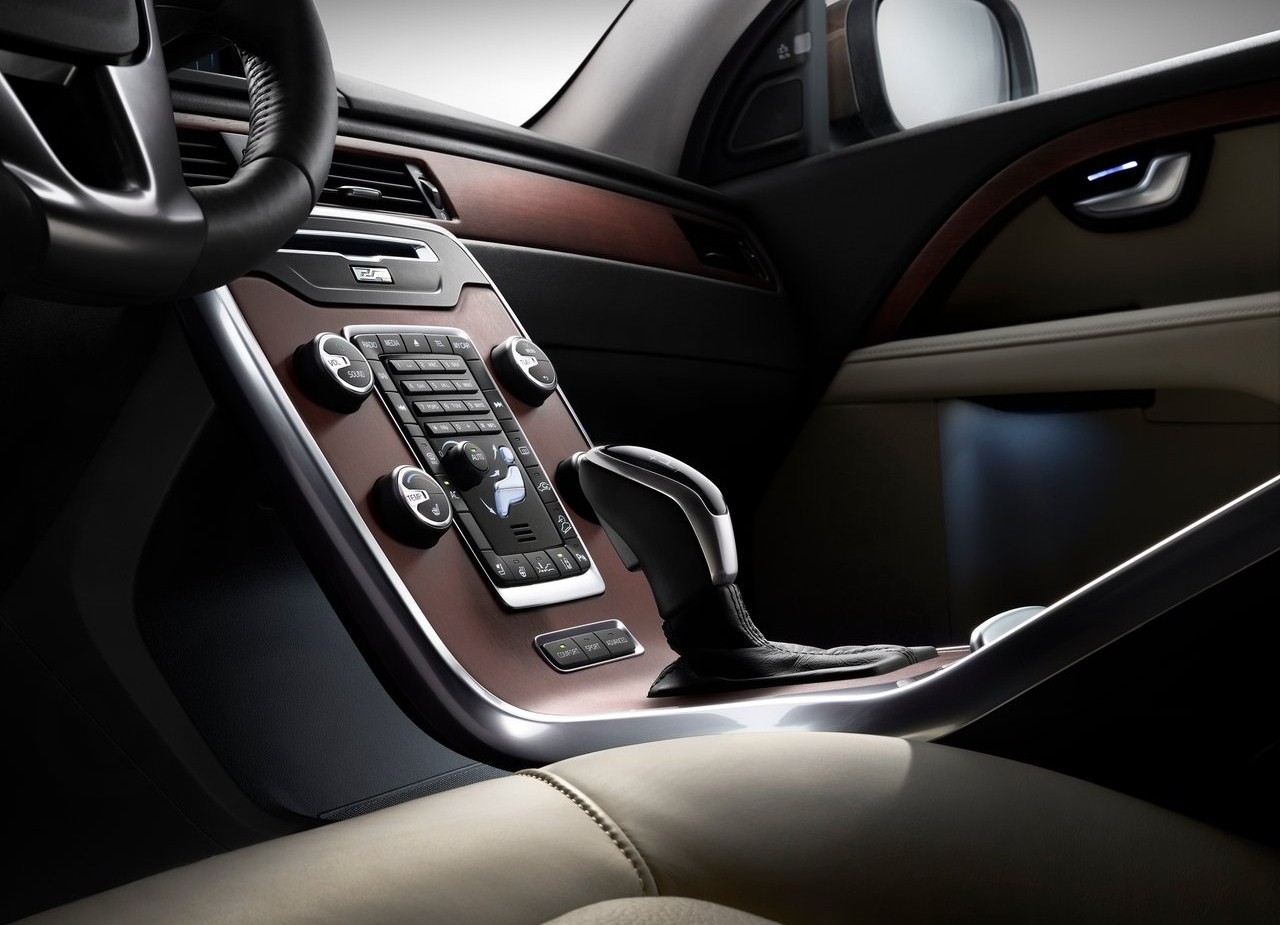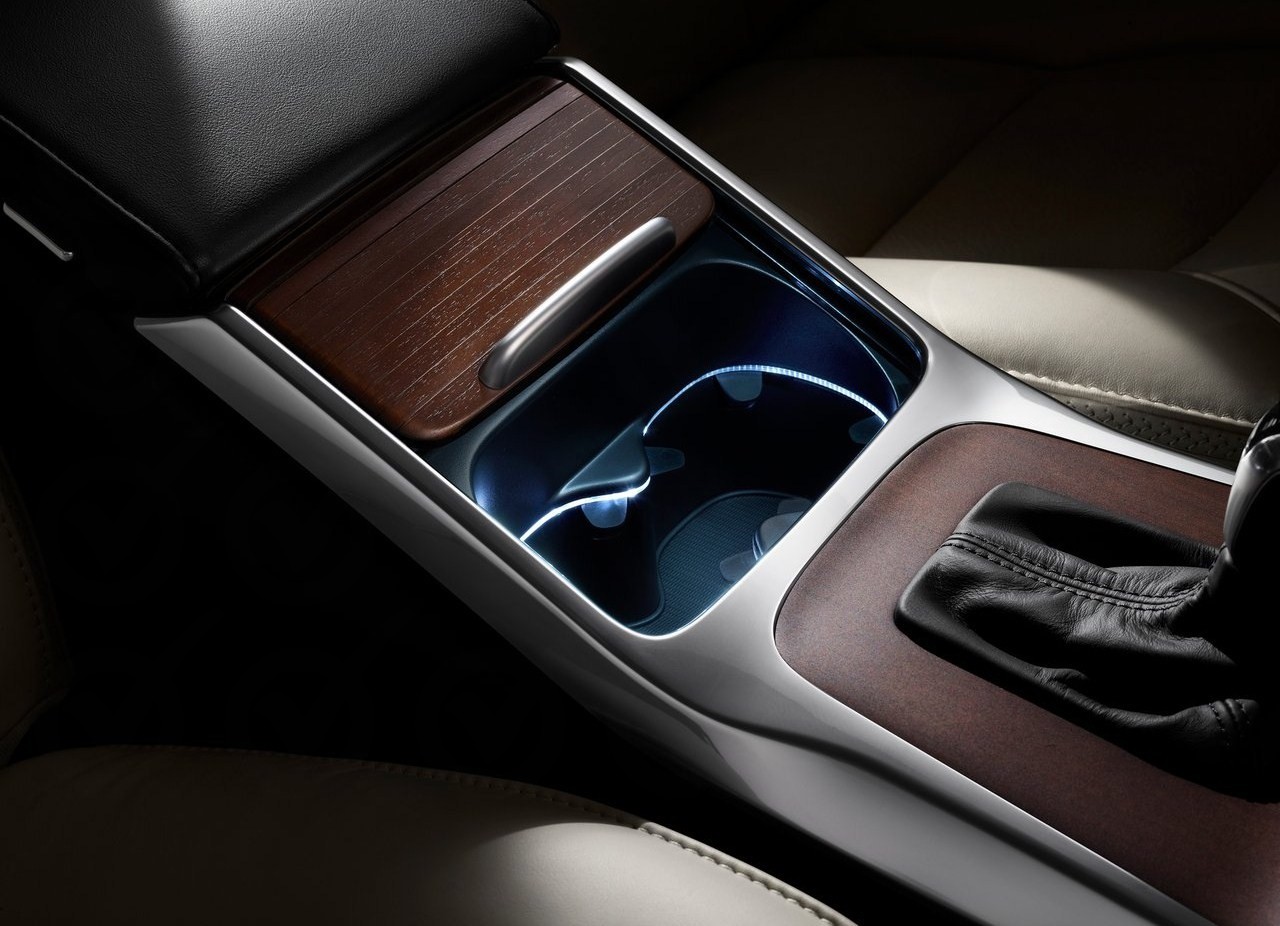
- Responsive 2.4-litre D5 twin-turbo diesel engine
- Comfortable ride
- High standard of interior fit and finish
- Underwhelming dynamics and body roll when cornering
- Light steering lacks precision
- Driver’s seat lacks lateral support
- 3.2-litre petrol engine lacks low-rev torque
- Thirsty 3.0-litre T6 turbo petrol engine
- Oil consumption for 2007-11 Volvo XC70 3.2
Review: Volvo Mk.3-I XC70 (2007-10)
Overview
Released in December 2007, the Volvo Mk.3 XC70 was a five seat, all-wheel-drive wagon. Manufactured in Torslanda, Sweden, the XC70 range initially consisted of 3.2 and D5 variants, though a new engine was introduced in September 2009 for the latter.
Engines: 3.2, D5244T4 D5 and D5244T10 D5 TTDi
Of the engines,
- The 3.2 variants were powered by 3.2-litre inline six cylinder engines that had aluminium-alloy construction, double overhead camshafts, Variable Cam Timing (VCT) and Cam Profile Switching (CPS) for inlet valves, four valves per cylinder, a Variable Intake System (VIS) with two throttle flap valves and a compression ratio of 10.8:1;
- For the original D5 variants, the D5244T4 diesel engine had an aluminium cylinder block and heads, a water-cooled variable geometry turbocharger, common-rail direct injection (operating at 1600 bar), double overhead camshafts, four valves per cylinder, cooled exhaust gas recirculation and a compression ratio of 17.3:1; and,
- Available from November 2009, the D5 TTDi was powered by Volvo’s D5244T10 diesel engine which had a two-stage turbocharger, a new common-rail direct injection system (operating at 1800 bar), piezo-electric injectors, an improved exhaust gas recirculation system and a lower compression ratio (16.5:1).
Dimensions and body
Compared to the Volvo Mk.2 XC70 , the Mk.3 XC70 was 105 mm longer (at 4838 mm), 1 mm wider (1862 mm), 42 mm taller (1604 mm) and had a 54 mm longer wheelbase (2815 mm). The rear load area increased by 55 litres to 575 litres and, with the rear tail-lights moved from the rear pillars to the tailgate, access to the load area was also improved. Furthermore, there was a 46 litre lockable storage area under the floor, while aluminium rails – with adjustable anchorage points – were also fitted to the floor.
| Variant | Editions | Year | Engine | Trans. | Peak power | Peak torque |
|---|---|---|---|---|---|---|
| 3.2 | N/A, LE |
2007-10 | 3192 cc B6324S petrol I6 | 6sp auto | 175 kW at 6200 rpm | 320 Nm at 3200 rpm |
| Ocean Race | 2008 | |||||
| D5 | N/A, LE |
2007-09 | 2400 cc D5244T4 diesel I5 | 6sp auto | 136 kW at 4000 rpm | 400 Nm at 2000-2750 rpm |
| Ocean Race | 2008 | |||||
| D5 (TTDi) | N/A, LE |
2009-10 | 2400 cc D5244T10 two-stage turbo diesel I5 | 6sp auto | 151 kW at 4000 rpm | 420 Nm at 1500-3250 rpm |
AWD system
The Volvo XC70 had a Haldex all-wheel drive system with an electronically controlled multi-plate clutch. In normal conditions, the system provided a 95:5 front:rear torque split. However, the system’s ‘pre-tensioned’ clutch used a non-return valve within the coupling to immediately provide up to 80 Nm of torque to the rear wheels when sensors detected that it was required, i.e. before wheel slip actually occurred; the system would also provide torque to the rear wheels under acceleration.
When the coupling’s clutch plates were engaged, up to 50 per cent of the engine’s torque could be directed to the rear wheels. The traction control system could also brake a single spinning wheel to transfer power to the wheels with traction, but was disabled under four-wheel braking. The XC70 was also fitted with hill descent control.
Suspension
The Volvo Mk.3 XC70 had MacPherson strut front suspension and independent, multi-link rear suspension. As an extra-cost option, buyers could specify Volvo’s ‘Four-C’ active chassis system which used inputs from sensors to vary damping resistance according to conditions; the driver could also select from Comfort, Sport and Advanced settings.
Safety equipment
Standard safety equipment for the Volvo XC70 included dual front airbags, front side airbags, curtain airbags for front and rear passengers, ABS, brake assist, electronic brake force distribution, electronic stability control, traction control, active front seat head restraints, anti-submarining seats and seatbelts with pretensioners and load limiters (front and rear).
Volvo’s adaptive cruise control (ACC) and collision warning with automatic braking (CWAB) were optional.
Features
Standard Volvo XC70 features included 17-inch alloy wheels, an eight speaker sound system with a CD player, MP3/WMA-compatibility and auxiliary inputs, dual-zone climate control air conditioning (with pollen filter), leather seats, a power adjustable driver’s seat, heated front seats, cruise control, front and rear fog lights, rear parking sensors, 40/20/40 split and folding rear seats, a leather-wrapped steering wheel and gearshift, remote central locking, power windows and heated mirrors, a tilt and reach adjustable steering wheel, power-operated park brake, 12 volt power outlet, cargo cover, trip computer and an immobiliser.
The XC70 LE was further equipped with 18-inch alloy wheels, a six-disc in-dash CD player, front parking sensors, a power adjustable front passenger seat, front parking sensors, rain-sensing wipers, power sunroof, power-operated tailgate, electrochromatic mirror and woodgrain interior trim.
An optional Technology Pack included satellite navigation, bi-xenon headlights and Bluetooth connectivity.
2008 XC70 Ocean Race
Released in November 2008, the Ocean Race was based on the standard editions but added cross-stitched leather upholstery, Ocean Race door panels and tread plate, colour-matched 17-inch seven-spoke alloy wheels, special paint colours (Ocean Blue or Electric Silver), chrome window trim, silver painted roof rails and front and rear skid plates.
Related links
- Technical Specifications: Volvo Mk.3-I XC70 (September 2009)
- Volvo Newsroom: The all-new Volvo XC70 – ready for tough adventures (March 2007)
- Volvo Newsroom: Volvo XC70 – model year 2008 (July 2007)
- Volvo Newsroom: Volvo XC70 – model year 2009 (May 2008)
- Volvo Newsroom: Volvo XC70 – model year 2010 (March 2009)
Review: Volvo Mk.3-II XC70 (2010-13)
Overview
Released in September 2010, the Volvo Mk.3 Phase II (Mk.3-II) introduced improved occupant protection and an updated interior; the range was also revised as the LE editions were discontinued. Inside, there was a new steering wheel and gearshift knob, ‘watch dial’ instrumentation and stitching on the door and centre armrests.
In November 2012, the XC70 range was updated (see ‘November 2012 update’, below) and expanded with the introduction of the T6 variant. Compared to the 3.2 engine, the 3.0-litre inline six cylinder engine for T6 variants differed in that it was fitted with a twin-scroll turbocharger, Variable Cam Timing applied for both intake and exhaust valves and the compression ratio was lowered to 9.3:1.
| Variant | Year | Engine | Trans. | Peak power | Peak torque |
|---|---|---|---|---|---|
| 3.2 | 2010-13 | 3192 cc B6324S5 petrol I6 | 6sp auto | 179 kW at 6400 rpm | 320 Nm at 3200 rpm |
| D5 | 2010-13 | 2400 cc D5244T10 two-stage turbo diesel I5 | 6sp auto | 151 kW at 4000 rpm | 420 Nm at 1500-3250 rpm |
| T6 | 2012-13 | 2953 cc B6304T4 turbo petrol I6 | 6sp auto | 224 kW at 5600 rpm | 440 Nm at 2100-4200 rpm |
Safety equipment
Compared to its predecessor, side impact protection was improved by strengthening the body between the A- and B-pillars, while the curtain airbags were recalibrated for greater sensitivity during front and rear-quarter collisions. The rear head restraints were also revised and repositioned.
Furthermore, the emergency braking lights would automatically strobe in emergency braking situations, while the hazard lights would then be activated once the vehicle had decelerated to a speed of less than 10km/h.
Features
Standard XC70 features were extended to include auxiliary a USB/iPod input and Bluetooth connectivity.
October 2011: XC70 update
In October 2011, the range was updated and standard safety equipment was extended to include the ‘City Safety’ autonomous braking system; standard features were also extended to include a six-disc CD player, a seven-inch monitor and reversing camera. Furthermore, the optional Teknik packages included satellite navigation, blind spot monitoring, a power adjustable front passenger seat and directional headlights.
November 2012: XC70 update
In November 2012, the City Safety collision avoidance system was upgraded to operate at speeds of up to 50 km/h and an improved camera was introduced for the Collision Warning with Full Autobrake and Pedestrian Detection system. Furthermore, the optional Driver Alert System was enhanced to include:
- A Road Sign Information system, which could display speed limits and other selected road sign information in the instrument panel; and,
- An Active High Beam function which could automatically enable and disable the high beam headlights according to traffic conditions.
Visually, these updated models could be identified by their illuminated gearshifts and grocery bag holders (fitted as standard) and revised number graphics for vehicle badges.
Technical Specifications
Related links
- Volvo Newsroom: Volvo XC70 – model year 2011 (August 2010)
- Volvo Newsroom: Volvo XC70 – model year 2012 (May 2011)
- Volvo Newsroom: Volvo XC70 – model year 2013 (August 2012)
Review: Volvo Mk.3-III XC70 (2013-16)
Overview
Released in September 2013, the Volvo Mk.3-III XC70 introduced a revised range which included Kinetic and Luxury editions, while the 3.2-litre petrol engine was withdrawn. Visually, the Mk.3-III XC70 could be identified by its wider front grille with a larger ‘iro Nmark’, daytime running lights, protective black plastic cladding (extended to surround the front fog lights) and new tail-lights.
Inside, the Mk.3-III XC70 featured a new adaptive digital display which used an active TFT (Thin Film Transistor) panel to provide the driver with personalised information. The Adaptive Digital Display also had three selectable themes: Elegance, Eco and Performance.
| Variant | Edition | Engine | Trans. | Peak power | Peak torque |
|---|---|---|---|---|---|
| D5 | Kinetic, Luxury |
2400 cc D5244T10 two-stage turbo diesel I5 | 6sp auto | 151 kW at 4000 rpm | 420 Nm at 1500-3000 rpm |
| T6 | Luxury | 2953 cc B6304T4 turbo petrol I6 | 6sp auto | 224 kW at 5600 rpm | 440 Nm at 2100-4200 rpm |
Safety equipment
Compared to its Mk.3-II predecessor, standard safety equipment for the Mk.3-III XC70 was unchanged – as per the October 2011 update, this included Volvo’s ‘City Safety’ system.
The Luxury editions were further equipped with Volvo’s Blind Spot Information System (BLIS).
Features
Standard features for the XC70 Kinetic editions included 17-inch ‘Valder’ silver alloy wheels, Sensus sound system with eight speakers, a CD/DVD player, MP3-compatibility, auxiliary inputs (3.5 mm/USB/iPod), Bluetooth mobile connectivity and audio streaming and a seven-inch touch screen, leather upholstery, climate control air conditioning, a power adjustable driver’s seat (with memory settings), heated front seats, cruise control, LED daytime running lights, rain-sensing wipers, a reversing camera, rear parking sensors, 40:20:40 split rear seat, a leather steering wheel, remote central locking, power windows, power adjustable and heated mirrors with retracting function, tilt and telescopic steering wheel adjustment, an auto-dimming rear view mirror, illuminated vanity mirrors, courtesy lights, a 12 volt power outlet, cargo cover, roof rails, a trip computer and an immobiliser. Furthermore, the XC70 was fitted with a temporary spare wheel as standard.
The XC70 Luxury editions were further equipped with 18-inch ‘Zephyrus’ diamond-cut matte tech black alloy wheels, Volvo Navigation System (VNS) with voice control, a power adjustable front passenger seat, front parking sensors, directional headlights with washers, proximity key (i.e. keyless entry), push-button start, a power-operated tailgate and Volvo ‘Guard Alarm’ with motion detection.
Brochures
Related links
- Volvo Newsroom: Volvo XC70 – model year 2014 (November 2013)
- Volvo Newsroom: Volvo XC70 – model year 2015 (April 2014)
- Volvo Australia: Volvo XC70
- Wikipedia.org: Volvo Mk.3 V70
